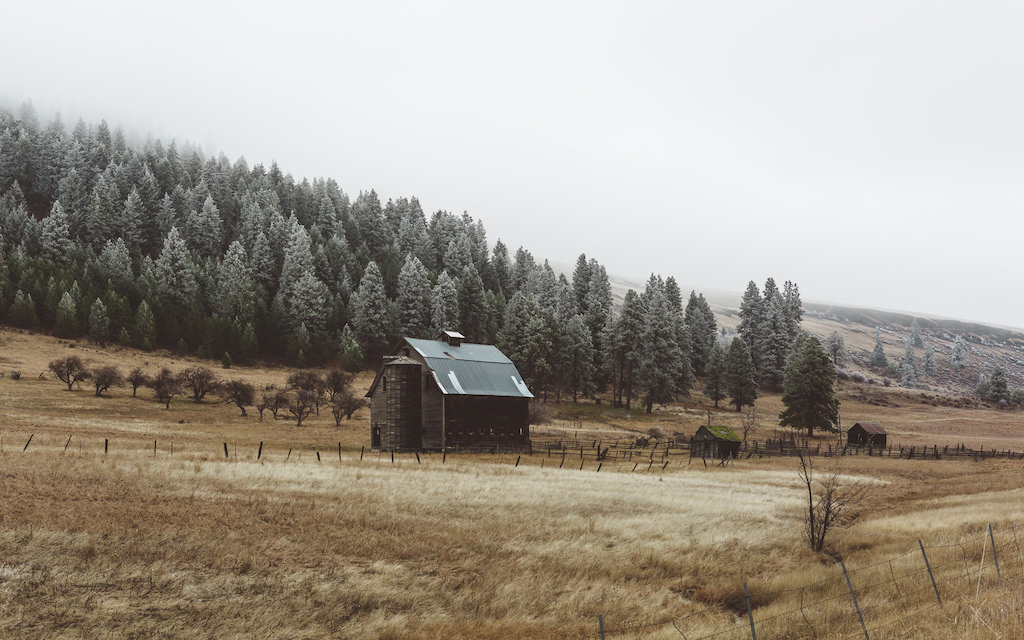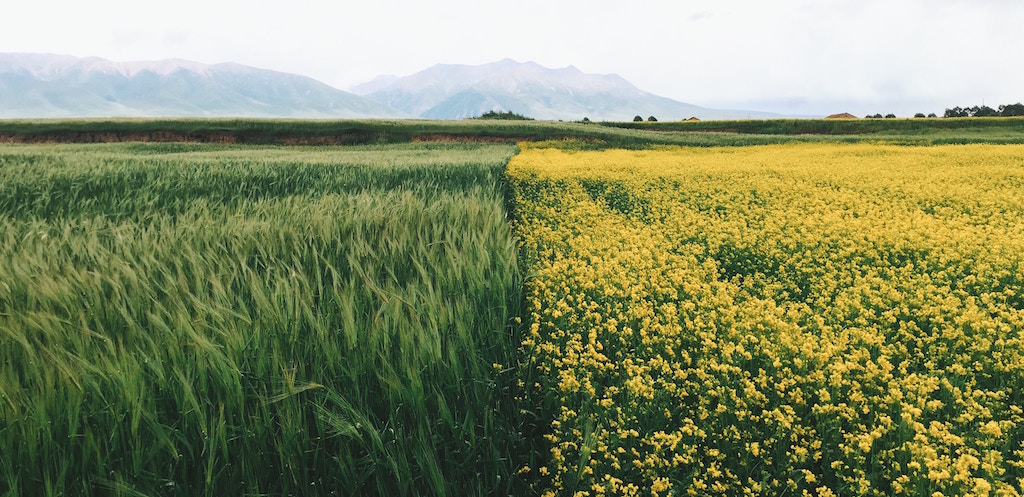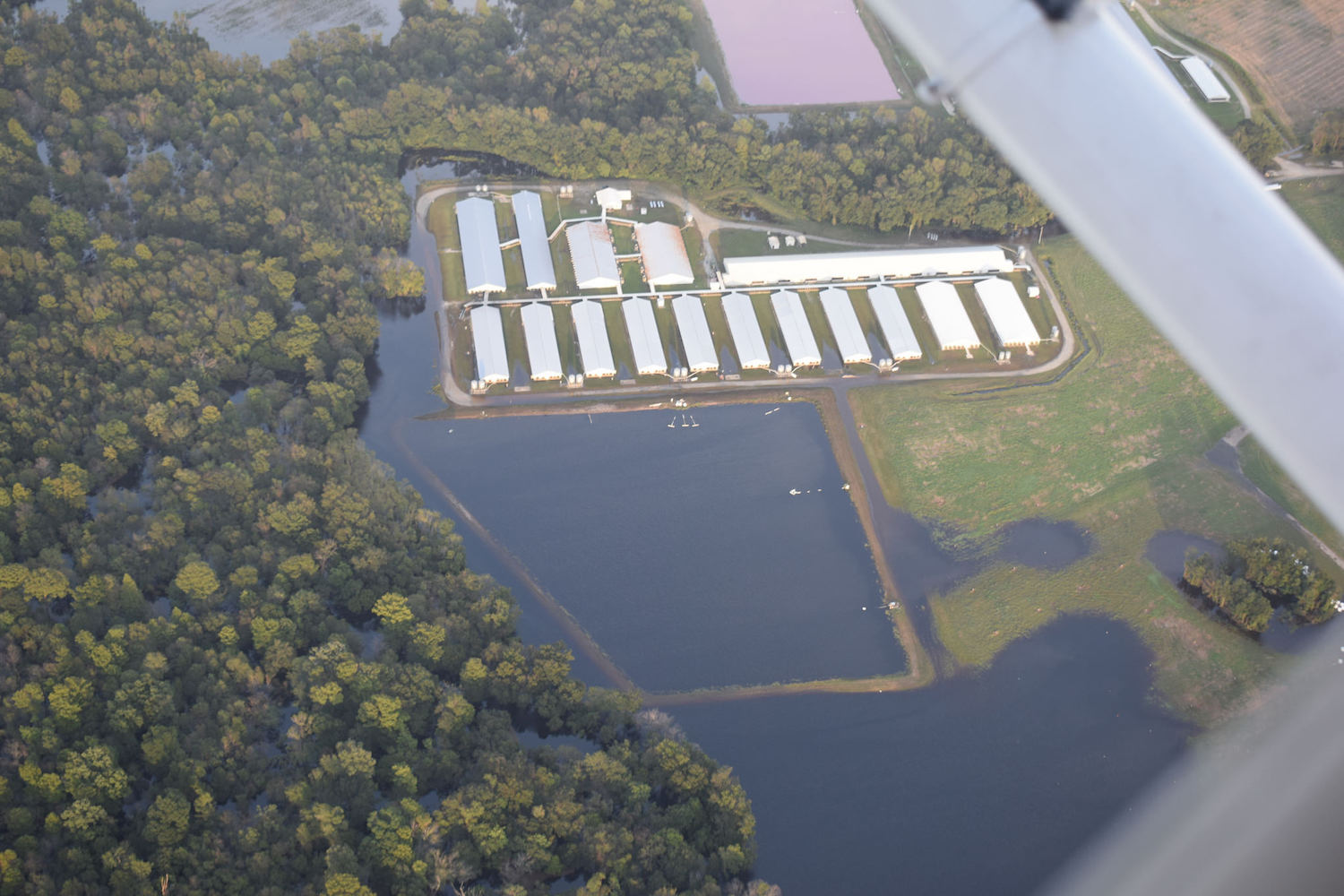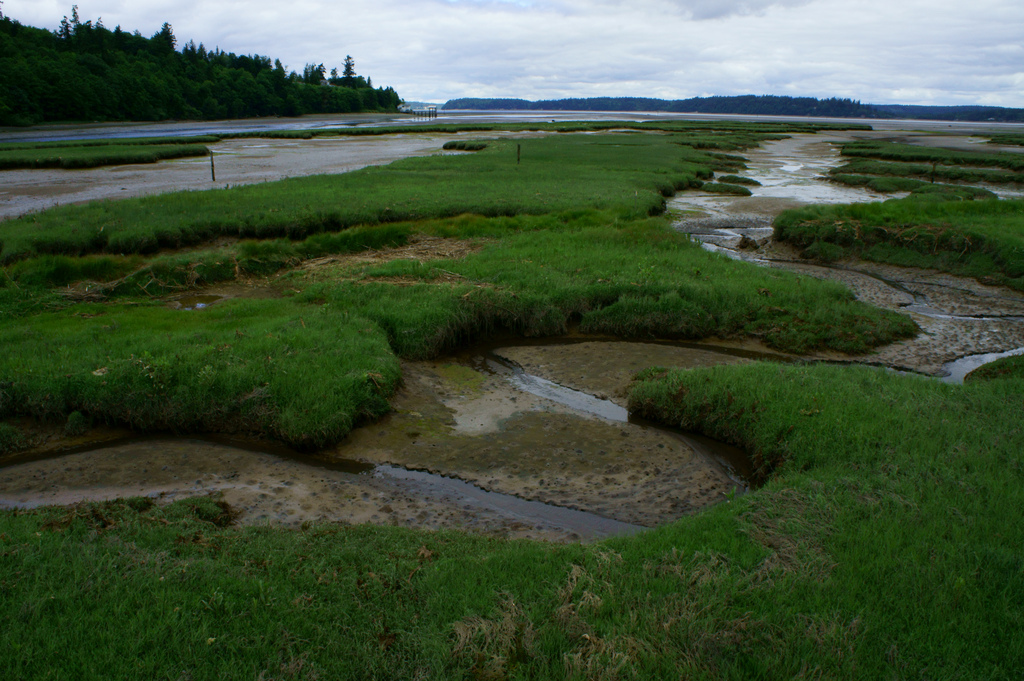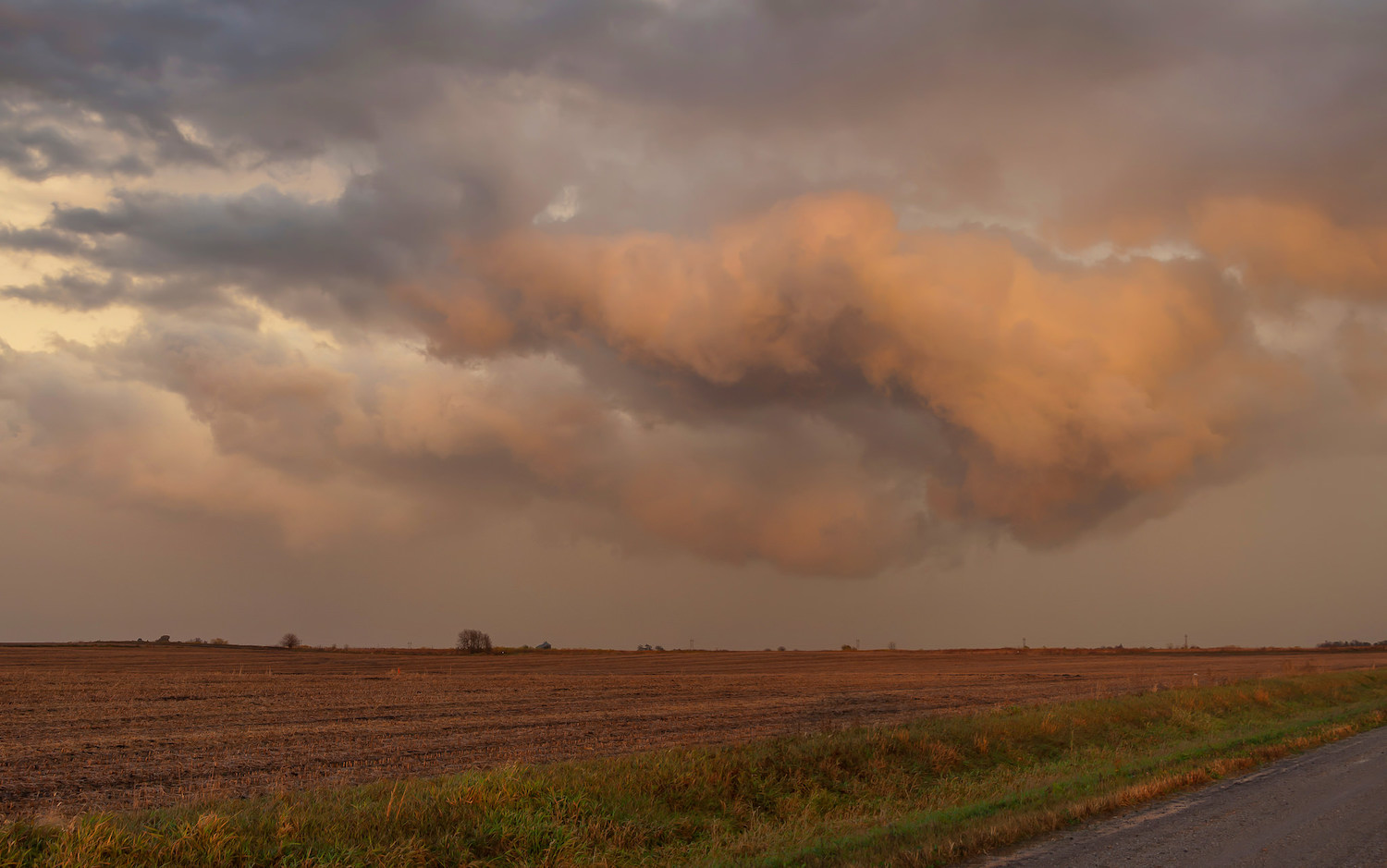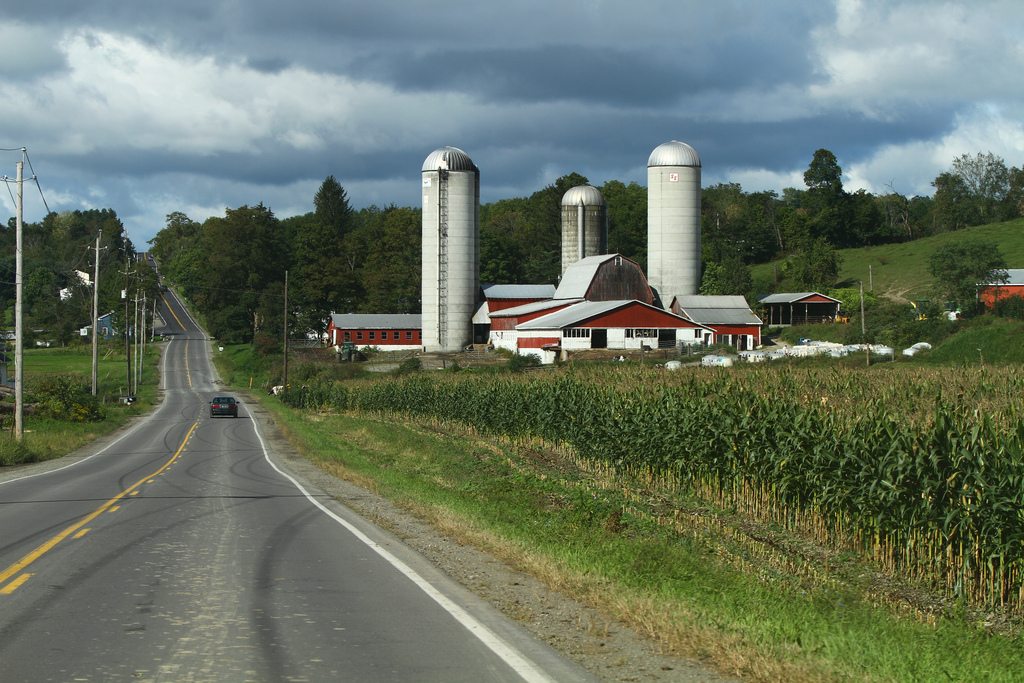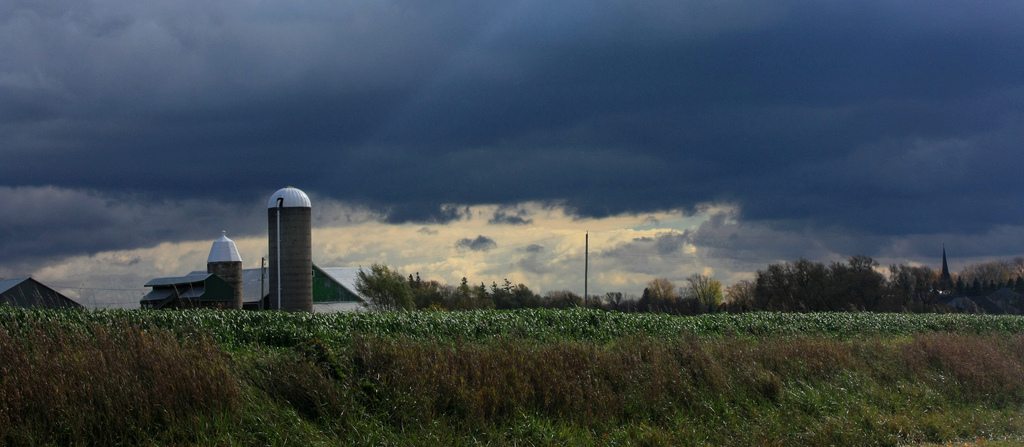Since 2012, Virginia Moore and Rebecca Martello have farmed a tiny plot of land, just 1/16th of an acre, 45 minutes from their home in Bremerton, Washington. That worked out for the first five years, when the couple grew only enough to eat themselves. But this season they sold 10 shares in a 16-week CSA branded as Sun Dog Farm—a small step forward that quickly maxed out their cozy plot. Now, with every available inch already planted, their dream of becoming full-time farmers is on hold.
“We can’t expand, can’t go into markets, can’t serve more people,” says Moore. So the pair will continue to work elsewhere—Moore full-time as a mental health clinician, Martello part-time as a dental assistant—until they can find more land. The tiny plot they do have is owned by Martello’s parents. But the hunt for acreage of their own has so far been unsuccessful.
The United States Department of Agriculture (USDA) estimates that 30 percent of U.S. farmland is owned by non-operators. But in some heavily agricultural states, that number is even higher. In Iowa, for example, more than half of farmland is farmed by renters. The economics of agriculture change completely—and not for the better—when farmers are working someone else’s land.
This gathering crisis is coming to a head as the oldest current generation of farmers prepares to retire. The average age of U.S. farmers is 58, a number that’s been on the rise for 30 years. What happens when those farmers retire? It depends, but if a farmer’s children decide not to get into the farming business the land is likely to be sold to non-farmers, developers, or corporate landlords who want to profit from agricultural land without farming it themselves. The NYFC estimates that nearly 100 million acres of U.S. farmland will change hands in the next few years, a development that’s likely to make affordable land even scarcer.
 Sun Dog Farms
Sun Dog Farms Virginia Moore and Rebecca Martello are just two of many young farmers who are struggling to find and secure funding for farmland
“Pressure to develop is really high,” says Moore. “People are buying their first home, their second home, and they and the developers are all willing to pay in cash.”
That’s why advocacy groups, land trusts, and other non-profit organizations are looking for ways to ensure that land continues to be working farmland, passed down to the next generation of farmers. Some hope that new online tools can make the process of finding and financing farmland easier, and two solutions, specifically, could provide models for the future. The first acts like an online matchmaker, connecting people selling land with the farmers who need it. The second helps to demystify the confusing economic prospect of acquiring farmland in the first place.
Finding farmland
In their search for land, Moore and Martello have a list of non-negotiables. “We need to live on our property,” Moore says. They also need an irrigation system, and they have a specific acreage in mind (though when they started they hoped for 15-20 acres, the pair have settled on about five as a goal). Finally, they need to be close enough to a decent-sized community to be able to deliver promptly. They scour online listings, tour farms, and even find the names of people who own empty plots and write them letters inquiring about the possibility of a sale. They don’t consider themselves picky—unless, says Moore, “you count needing potable water as picky.”
So far, they’ve found nothing that fits their specific criteria. But at least now they have a little help—from the PCC Farmland Trust’s Farm to Farmer tool.
PCC Farmland Trust, which works to conserve land for farming in the Northwest, sees over and over new farmers who are looking to buy land. But the non-profit conservation organization has another angle on the issue, too: It also hears from farmers looking to sell. “We know that more than two-thirds of owners are close to retiring, want to pass land on to future farmers, and haven’t chosen a successor,” says Megan Jenny, the Trust’s community engagement manager. “But not all of them are people we can work with through conservation programming.”
“Historically, land transfers worked through word of mouth and family,” says Jenny, but both are happening less now. New farmers like Moore and Martello are finding their careers on their own, rather than because it’s what their parents did, so they need to build their businesses from the ground up, starting with acquisition of land. PCC Farmland Trust realized that this was where it could help: connecting land owners and land seekers. “That was a lightbulb for us,” says Jenny. “It was a barrier to land access that we could help with.”
The tool, launched in June at farmtofarmer.org, works something like an online matchmaker. Though PCC Farmland Trust’s program is fairly new, it looks to older programs as examples, including the Maine Farmland Trust’s FarmLink, which currently lists 75 farms and 26 farm seekers and has made 190 matches through the years. Farm to Farmers’s land seekers can say whether they’re looking to lease or buy, how many acres they want (minimum and maximum), and filter by keyword, organic status, and housing availability. Land owners can search for a farmer by the same categories of buy/lease and preferred acreage, but also by years and type of experience, type of business, and whether or not they’re currently farming.
Demystifying the true cost of farmland
To even get to the point where they could put an ad on Farm to Farmer, Martello and Moore had to figure out what they really needed: how much protected area they could afford to have on their land, what they could do with 15 acres or with 40. That complicated financial calculation isn’t for the faint of heart. Though the search for land has been a major challenge in its own right, Moore says, “understanding the financing has been equally intricate.”
Enter NYFC’s Finding Farmland Calculator. The tool lets farmers build up to three different scenarios, starting with the price and size of the farm, then manipulate different financing systems and options to add to the price of the farm. It’s not entirely different from the kind of mortgage payment calculator you might find for homebuyers, except that it is specialized to the options available to farmers, including USDA Farm Service Agency loans and conservation easements.
 Sun Dog Farms
Sun Dog Farms The traditional system of passing down farmland from family to family has all but disappeared, but the fact is it was problematic to begin with
“We hope to give farmers a head start,” says Rippon-Butler of why NYFC chose to launch the program. “We understand the big challenge when it comes to understanding costs.” In some cases, farmers might approach a bank and the it may not even know what a conservations easement is. “The bank is ultimately trying to sell a product,” Rippon-Butler says of how the calculator differs from the help farmers might get elsewhere. “But this helps farmers get information lined up before or as part of a loan.”
The tool, she admits, isn’t necessarily a solution, but addresses some of the challenges new farmers have with land access—showing how loan interest can double the cost of a property over time. “The underlying issue is that we don’t value farmland in this country,” says Rippon-Butler, and that makes it tough for farmers to compete or even to get money in time to be a player. The tool lets farmers play around with various scenarios to figure out how they could potentially succeed.
Like the Farm to Farmer tool, the Finding Farmland Calculator helps young farmers navigate an industry that was never set up to transfer land to them. The traditional system—passing farmland down from family to family—has all but disappeared. But the fact is, points out Rippon-Butler, that system was problematic to begin with. “Land has been much more available to white people, much less available and secure for farmers of color.”
In order to address the issue of land access for young farmers on a national scale, online tools like Farm to Farmer and Finding Farmland Calculator can’t work alone. They need to go hand in hand with other means of breaking down barriers. For example, NYFC recently worked on an initiative in Minnesota that gave incentives to established farmers who sold land and equipment to newer, young farmers. Other approaches include stewardship and conservation easements. But the challenges are stark. Solving the land access issue will require looking at a broad spectrum of factors—from the ways student loans and debt management affect farm finances to the history of displacements that has made land access unequal to farmers of different backgrounds.
In the meantime, the tools bring hope and help to farmers looking to speed up the long process of finding their own land. “We’re so satisfied with the work we do,” says Moore. “It brings us a lot of joy.”
